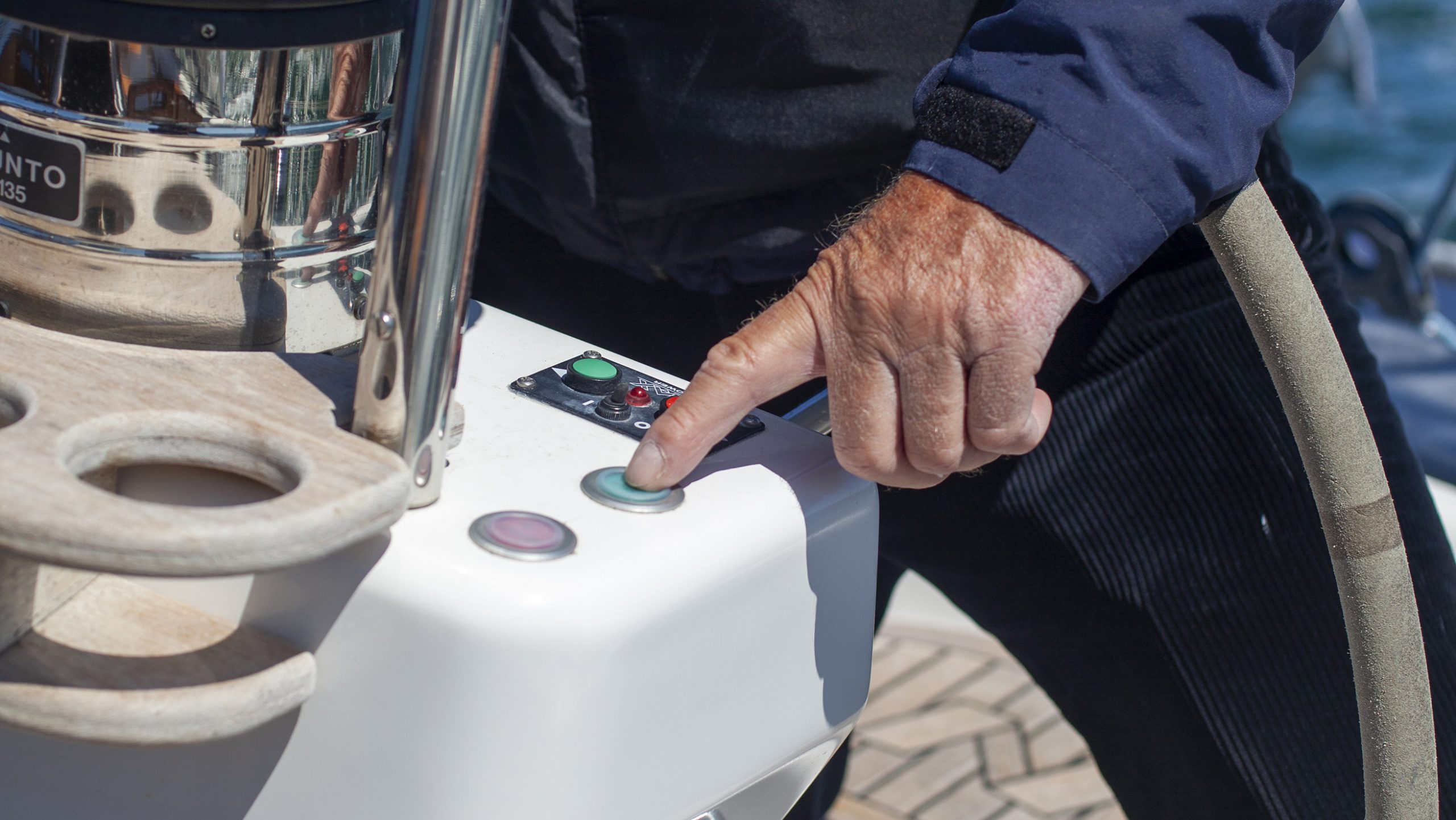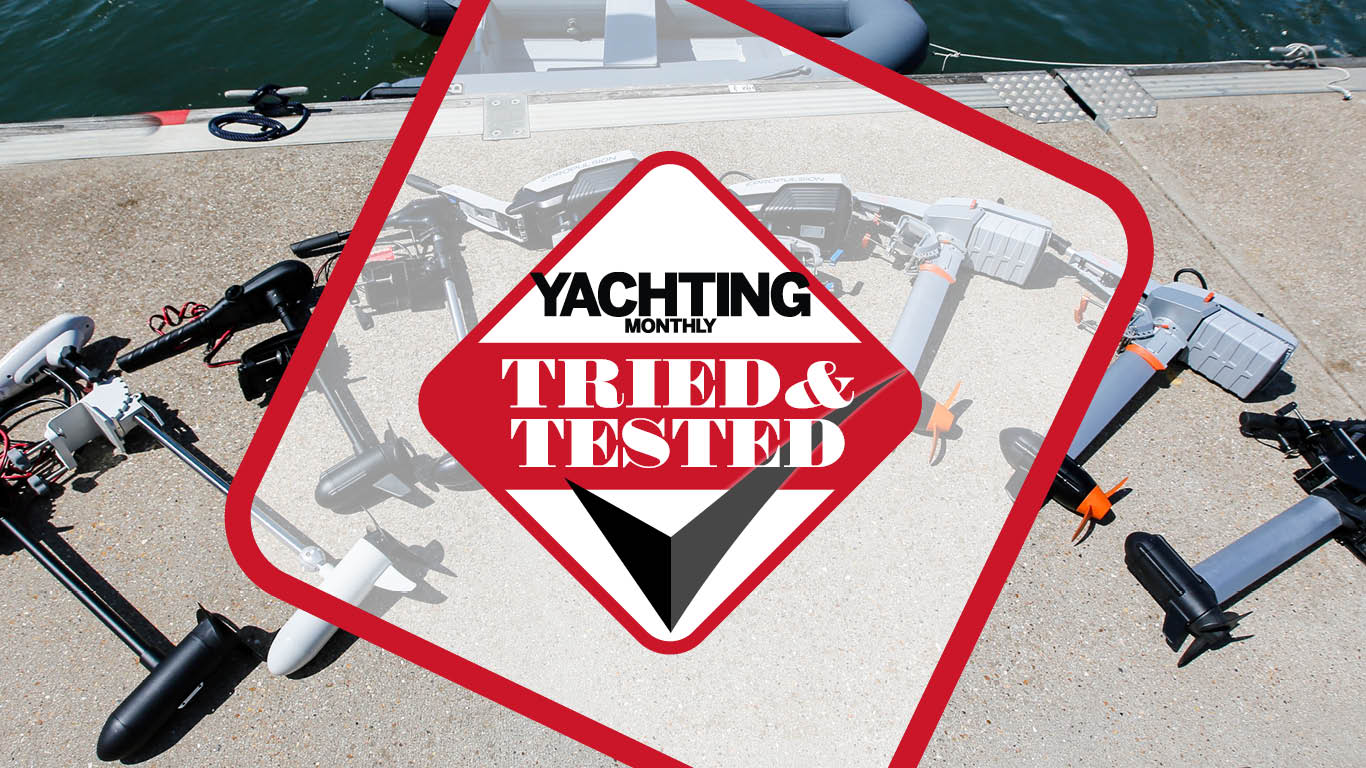Electric anchor windlasses are becoming more affordable and can take the strain out of cruising shorthanded, says Sam Fortescue
Electric anchor windlasses: a guide to the latest tech
There’s no conversion kit for ageing manual windlasses, so you’ll have to buy a complete electric unit if you’re upgrading.
Luckily, they are cheaper than electric winches. Prices start around £600 for Lewmar’s V700, including switches and circuit breakers.
Pulling power is the first consideration.
An electric anchor windlass should be able to pull four times the weight of the chain and the anchor combined.
On heavy displacement boats or for bluewater peace-of-mind, look for an extra safety factor to account for getting the boat moving.

Some electric windlasses can be integrated with your boat’s existing instruments so you can monitor the anchor from the helm
For a 45-footer, that means you’re probably looking at 600-800kg of pulling power. Don’t set much store by the wattage rating on the side of the electric anchor windlass.
‘We could label the 1,000W motor as 1,500W, but run time would be less than 10min before excessive heat was built up,’ explains Stephen Baker at Maxwell Marine.
‘At stall load these motors can absorb 5kW of electrical power! Simply comparing manufacturers’ stated “wattage” is fairly meaningless.’
Each manufacturer has its own design features. Lewmar’s VX and HX lines, for instance, offer a composite gypsy (the toothed wheel that grips the chain and/or rode).
Meanwhile, Maxwell says its ‘Wave’ design gypsy grips rope rode much better and without the damage caused by jammer systems.
Lofrans offers a beautiful stainless-steel windlass with a particularly small footprint, the SX, plus it has stainless steel bearings and a built-in magnet for connection to a chain counter.
Windlass switching
Electric anchor windlasses are all ‘push button’. The question here is more where that button is and how it works.
The simplest and most bombproof system uses a pair of high-current foot buttons on deck to control the windlass.
As they are rated for a big slug of amps, the power to the windlass can pass straight through them, with no need for failure-prone relay switches.
Most people like the functionality of a remote control, however – that box with rubber buttons on a curly wire coming out of the anchor locker.
This requires a control box and a relay system that will make a connection in the heavy cables that supply the windlass.
Continues below…
Electric winches: a buyer’s guide
Electric winches are becoming cheaper and simpler to fit, making effortless sailing an affordable option, says Sam Fortescue
Anchoring: 7 common problems solved
Yachting Monthly experts share the problems they have most often faced when anchoring, and how they troubleshoot their way out
Electric yacht: What are the options for going electric?
Electric and hybrid yachts are growing in popularity; we outline the current options for those making the switch
Best electric outboard motor: We put the market leaders to the test
The electric outboard motor has been around for many years, but they have either been too low powered or their…
It is wise to pair it with the basic foot buttons, to give a failsafe. There is also a third option.

Muir electric anchor windlasses come with a three year guarantee. Credit: Muir
Manufacturers have taken the remote-control idea to its logical conclusion by designing an up/down button for mounting at the helm, so that you can raise and lower the anchor without leaving the cockpit.
Italy’s Quick goes further still with a wireless module that allows you to keep a key fob in your pocket or in a holster by the helm for raising and lowering the hook.
Muir has a similar capability for its smaller recreational windlasses, as does Lofrans (with an optional chaincounter built-in) and Maxwell.
Quick in fact takes connectivity to a whole different level with its QNN network, which allows its windlasses to be integrated with your chartplotter.
A black-box ‘brain’ sits between any Quick equipment and an HTML5 output that will feed straight into a Quick app on your multifunction display via an ethernet connection.
Most modern MFDs from Garmin, Raymarine and B&G are HTML5 compatible. It means that you can monitor windlass use and control the unit all from the MFD’s touchscreen.
The system also integrates with Quick bow-thrusters, battery chargers and underwater lights. ‘QNN offers practicality and comfort in the management of Quick products installed on board,’ explains Andy Sims of Quick UK.
‘Checking the status of the battery chargers and stabilisers or managing the lighting of certain areas becomes easier and quicker, just like manoeuvring on the quay or raising the anchor from the same location.’
Electric anchor windlasses: main brands
Lewmar

Credit: Lewmar
Prices start from £600. VX and HX ranges feature a composite gypsy.
Maxwell

Credit: Maxwell
A ‘wave’ design gypsy grips a rope rode without damaging it, as well as holding chain.
Quick

Credit: Quick
Quick winches can be controlled via keyfob remotes, and even via MFD chartplotters.
Lofrans

Credit: Lofrans
Stainless steel and a small footprint are aesthetically pleasing.
Lofrans also offers remote controls.
Muir

Credit: Muir
Muir is distinguished by its Italian gear box assemblies and three-year warranty.
Enjoyed reading Electric anchor windlasses: a guide to the latest tech?
A subscription to Yachting Monthly magazine costs around 40% less than the cover price.
Print and digital editions are available through Magazines Direct – where you can also find the latest deals.
YM is packed with information to help you get the most from your time on the water.
-
-
- Take your seamanship to the next level with tips, advice and skills from our experts
- Impartial in-depth reviews of the latest yachts and equipment
- Cruising guides to help you reach those dream destinations
-
Follow us on Facebook, Twitter and Instagram.








